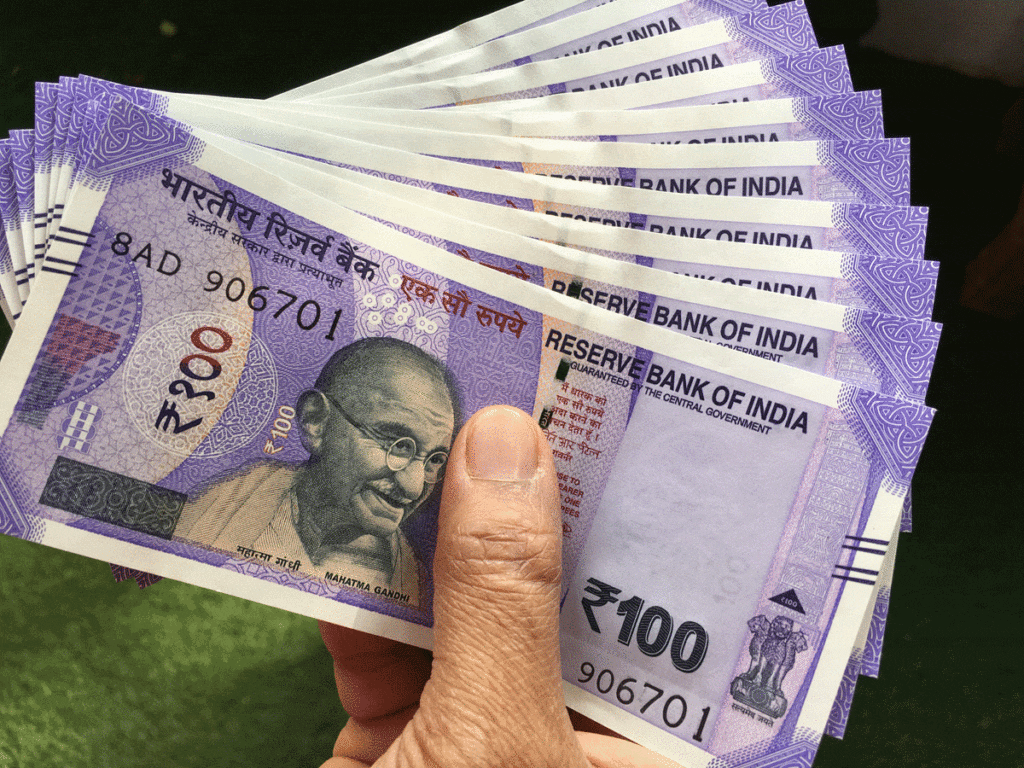Analysts expect the rupee could inch towards 75.50 and may even touch 76 against the dollar. Indian rupee continued to slide against the UAE dirham with the rupee closing at Rs20.46 in the interbank forex market.
The rupee’s weakness against the dirham is a reflection of the currency’s decline against the US dollar to which the UAE currency is pegged.
The Indian currency registered its worst decline driven by rising oil prices and the strengthening of the dollar in the international forex markets.
The rupee tumbled 20 paise to close at 74.99 against the US dollar, as rising crude oil prices weighed on investor sentiment, even as the domestic equities gained.
At the interbank foreign exchange market, the local currency opened at 75 and witnessed an intra-day high of 74.91 and a low of 75.16 against the US dollar in day trade.
The local unit finally settled at 74.99 a dollar, down 20 paise over its previous close.
Weak outlook
The rupee has been on a persistent slide over the past week largely driven by rising crude oil prices.
India imports more than 80 percent of its domestic oil consumption, accounting for about 20 percent of the total import bill, resulting in a big outflow of foreign exchange to meet the import demand.
Brent crude futures advanced 0.76 percent to $82.57 per barrel on Friday.
As a rule of thumb, every $10 per barrel increase in crude prices leads to an additional $12.5 billion deficit, which is roughly 43 basis points of India’s GDP, according to an estimate by the RBI in 2019.
The rupee is also likely to be weighed down by forex outflow resulting from foreign institutional selling on the equity markets. Although the domestic equities continued to post gains with the BSE Sensex closing 381.23 points or 0.64 percent higher at 60,059.06, the gains were largely driven by domestic investors. Foreign institutional investors, on the other hand, were net sellers fearing a technical correction on the markets.
Monetary policy
The Reserve Bank of India (RBI) Friday kept key interest rates unchanged for the eighth time in a row, slashed the inflation target for 2021-22 to 5.3 percent, and indicated the unwinding of the accommodative policy as the economy shows signs of emerging from the impact of the Covid-19 pandemic. RBI has discontinued the government securities acquisition program (G-SAP) as part of liquidity normalization.
On the macroeconomic front, the RBI on Friday decided to keep the benchmark interest rate unchanged at 4 percent but maintained an accommodative stance even as the economy is showing signs of recovery after the second COVID wave.
“Our entire approach is one of gradualism. We don’t want suddenness or surprises. More so, we realize as we approach the shore, we don’t want to rock the boat. Because we realize there are lives and journeys beyond the shore, so we don’t want surprises. Our approach will be calibrated, it will be an approach of gradualism,” RBI Governor Shaktikanta Das said announcing the policy changes.
Although the liquidity normalization bodes well for the rupee in the long run, in the near term a liquidity contraction-driven correction in the equity market and subsequent withdrawal of foreign investors could hurt the rupee further.
Foreign portfolio investors have invested a net Rs 670 billion in Indian equities so far this year. A fast sell-off in carrying trade positions could spell further trouble for the rupee.
How far down?
Analysts expect the rupee could inch towards 75.50 and may even touch 76 against the dollar briefly, given the current economic conditions and the oil price outlook.
The latest data from the RBI showed India’s foreign exchange reserves declined by $1.169 billion to stand at $637.477 billion in the week ended 1 October.
Analysts said the substantial reserve position gives RBI the elbow room to intervene in the interbank forex market and keep the rupee’s slide range-bound in the short term.
(Except for the headline, this story has not been edited by The Finance World staff and is published from a syndicated feed.)


